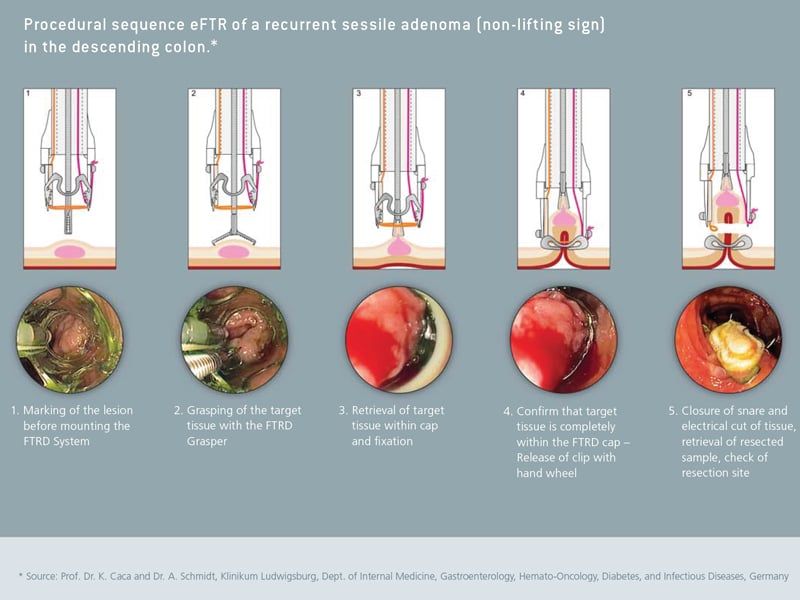In modern medicine, endoscopy is the gold standard in the diagnosis and treatment of gastrointestinal (GI) tract conditions. Through endoscopy, the doctor can detect very small lesions, only a few millimeters, perform a biopsy to find cancer cells, and take tissue samples to diagnose a variety of digestive diseases. However, in some cases, lesions may lie deep in the wall of the GI tract, which requires special techniques such as full-thickness resection to remove them. One of the newest technologies to treat those deep growths without surgery is endoscopic full thickness resection (EFTR) using the full-thickness resection device (FTRD).
In the past, once a deep-seated lesion or early tumor has been identified and cannot be removed with complex tissue resection techniques such as endoscopic submucosal dissection (ESD), patients may require a surgical resection. The FTRD allows the endoscopist to achieve a thicker portion of resection to achieve oncologic resection, similar to that of surgical resection. In addition, a complete tissue resection in one-piece helps to stratify early cancerous lesions, i.e., if it shows evidence of lymphatic, vascular, or nerve invasions, so that the multidisciplinary tumor board can make a decision on the next step of management.
The Bumrungrad Digestive Disease Center team, led by US-trained Clinical Associate Prof. Dr. Tossapol Kerdsirichairat, is the first in Thailand and one of the very few in the regions to receive intensive training and regularly practice this technique.

How is EFTR using FTRD performed?
Gastroenterologists use specially designed endoscopes that include a device to remove stuck-to-the-wall non-cancerous and early cancerous growths, which helps many patients to avoid more invasive surgeries. The result may be a shorter treatment time and faster recovery.
EFTR using FTRD is very effective for removing lesions lying deep in the digestive tract wall. Because of the location of these growths, other procedures could lead to complications, e.g., tearing or perforation of tissue. It is more effective than other types of resections for safely removing difficult-to-dissect tumors.
In addition to deep tumors, doctors can use EFTR for:
- Difficult-to-treat bleeding in the gastrointestinal tract
- Postsurgical or endoscopic complications such as perforation (tears)
- Closing holes or openings between organs or tissues (chronic fistula)
Common side effects of EFTR may include:
- Sore throat for upper digestive tract use
- Nausea or vomiting
- Excessive gas, bloating, or cramping
- Mild abdominal pain or rectal pain for lower digestive tract us
For more information about non-surgical treatment for digestive tract conditions, please contact the Bumrungrad Digestive Disease Center and schedule an appointment with our gastroenterologists.
By Clinical Assoc. Prof. Dr. Tossapol Kerdsirichairat.
For more information please contact:
Last modify: November 30, 2024